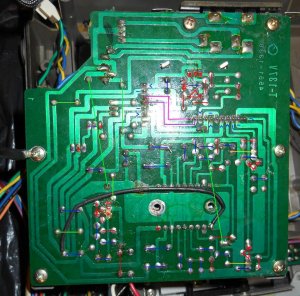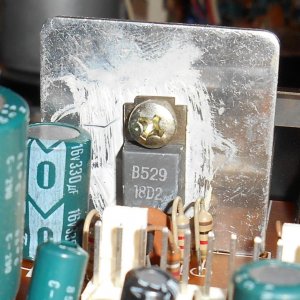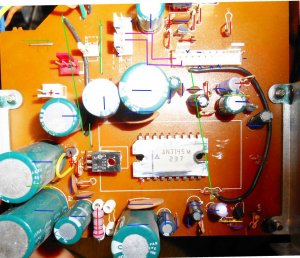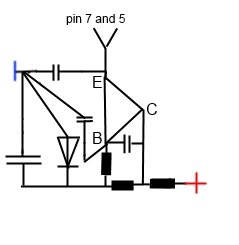t8ja said:
...........It wouldn't be toast, if it's an NPN, bcs the base has to go negative (to ground) for it to conduct from Emitter to Collector ........... Eng is not my first language.
Well, I'll just say this and then I'm out of here. That is a "standard" zener-diode/transistor-driver regulator if I ever saw one and I'm 101% certain you are mistaken about how transistors operate, unless something is lost in translation. In the case of NPN transistors, and the 2SC1368 is in fact an NPN transistor, the base must be more positive with respect to the emitter in order for CE junction to conduct. The way you suggested for base to go neg to ground (in a DC, not dual system) for CE to conduct is how a PNP transistor would work, not NPN; and even in the case of a PNP, the base would needs to be "more" neg with regards to E which if you think about your suggestion, that B and E are both ground, then that scenario would be problematic, would it not? Now when I said the transistor would be toast, read again what I said.... I said "IF" the emitter is connected directly to ground like you suggested, transistor would be toast. That's because with collector and base at + rail, and emitter at ground, with a non-resistive load to restrict current flow, the transistor would conduct and short the +( C) and -(E) (with respect to emitter which again, is at ground per your suggestion).
Going back to post #9, my point was that if C and B are at the same voltage which is what you said you measured, then the zener diode might be blown UNLESS the collector and diode cathode is below zener voltage which is not normal and the resistor that feeds the base and zener cathode might be shorted, and which is why I asked for BCE measurements (you provided none and still haven't). Under normal circumstances, the base should read lower voltage than collector because the base is fed through a resistor, and the zener diode which is also connected to the base should shunt some voltage to ground at the zener voltage of the diode.
Emitter is on ground (through a cap), so how is there to be a drop at all?
Simply by testing the voltage with your DMM will already introduce a load onto the circuit, albeit a small one. Additionally, the transistor itself has internal voltage drop (remember, internally, the transistor behaves like diode, which also has forward voltage drop). Anyway, it doesn't matter. IF your regulator circuit is working properly, collector should be at rail voltage, base should be the zener voltage which is generally lower than rail, and emitter will be approx .5 to .7 volts lower than the base voltage. Just to demonstrate that this isn't BS, I just now quickly rigged up on my portable electronics lab using some generic components, mocked up a zener/transistor regulator with NO LOAD and as expected, the emitter voltage was ~.5v lower than the base. You don't need to think about this unless you have a complete understanding, it simply works.
Anyhow, you've not given the other voltage readings I asked for, in fact, you've given only enough information to not allow us to actually analyze your situation. Clearly have your own ideas about how electronics work, and that's fine but I personally don't have the patience to try to convince you otherwise, so I'll just leave this at that. I do hope you give what I stated some more thought, do some more research about transistors (NPN & PNP) and maybe learned something here.





